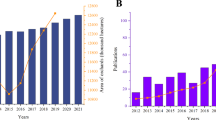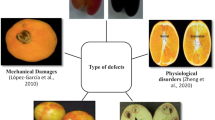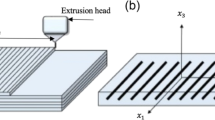Abstract
The digital image processing studies are used in order to eliminate problems of subjective pilling evaluation. However, these applications did not come to the desired point. The purpose of this research is to put forward with explanations about the reasons for the failures of previous studies in objective pilling evaluation. In this study, three issues were dwelled on. Firstly, data belong to original fabrics (0 turns) were taken into consideration. Secondly, data were standardized using min-max normalization with a feature scaling approach to compare different fabrics. For this process, data after pilling and results belong to original fabrics (0 turns) were taken together. Thirdly, knitted fabrics were separated into different categories according to formed pill types and characteristics after pilling processing. The results were evaluated in the most appropriate category according to the pill’s structure. Two sample fabrics containing appropriate structure and characteristics which were able to explain the three overlooked issues were used. In digital image processing made by paying attention to these mentioned three points, both pill parameters and textual features obtained from digital images were determined. The relationships between these parameters and subjective evaluation results were examined.
Similar content being viewed by others
References
A. Konda, L. C. Xin, M. Takadera, Y. Okoshi, and K. J. Toriumi, Text. Mach. Soc. Jap., 36, 96 (1990).
C. H. Hsi, R. R. Bresee, and P. A. Annis, J. Text. Inst., 89, 80 (1998a).
C. H. Hsi, R. R. Bresee, and P. A. Annis, J. Text. Inst., 89, 96 (1998b).
B. J. Xu, Text. Inst., 88, 488 (1997).
T. J. Kang, D. H. Cho, and S. M. Kim, Text. Res. J., 74, 1013 (2004).
S. C. Kim and T. J. Kang, Text. Res. J., 75, 801 (2005).
B. K. Behera and T. E. Mohan, Int. J. Clot. Sci. Tech., 17, 279 (2005).
X. Chen, J. Wang, and L. Li, “In Image and Signal Processing (CISP)”, pp.1903–1906, IEEE, 2011.
S. Kim and C. K. Park, Fiber. Polym., 7, 57 (2006).
I. Jasińska, Fib. Text. East Eur., 17, 73 (2009).
A. D. O. Mendes, P. T. Fiadeiro, R. A. Miguel, and J. M. Lucas, Text. Res. J., 79, 410 (2009).
A. Cherkassky and A. Weinberg, Text. Res. J., 80, 226 (2010).
W. Gao, R. Pan, J. Liu, and S. Wang, Indus. Textila, 62, 192 (2011).
M. Eldessouki and M. Hassan, Exp. Syst. Appl., 42, 2098 (2015).
R. Furferi, L. Governi, and Y. Volpe, J. Eng. Fibers Fabrics, 10, 79 (2015).
M. Eldessouki, “Applications of Computer Vision in Fashion and Textiles”, pp.147–187, Woodhead Publishing, 2018.
L. Technikov, M. Tunák, and J. Janáček, J. Text. Inst., 108, 123 (2017).
LineTech Industries, Inc., “PillGrade Operation Manual”, http://tobjackson.synology.me/images/pillgrademanual.pdf (Accessed April 1, 2019).
G. O. Kayseri and E. Kirtay, J. Eng. Fibers Fabrics, 10, 62 (2015).
A. Telli and I. Ozkan, “ITTC-7th International Technical Textiles Congress”, pp.309–312, 2018.
A. Telli and I. Ozkan, Teks. Müh., 112, 313 (2018).
B. Xin, J. Hu, and H. Yan, Text. Res. J., 72, 1057 (2002).
A. Telli, Teks. ve Kon., 29, 268 (2019).
MathWorks, https://uk.mathworks.com/help/images/texture-analysis-using-the-gray-level-co-occurrence-matrix-glcm.html?s_tid=srchtitle (Accessed September 13, 2019).
MathWorks, https://uk.mathworks.com/help/images/ref/regionprops.html (Accessed September 13, 2019).
M. Eldessouki, H. A. Bukhari, M. Hassan, and K. Qashqary, Fib. Text. East. Eur., 108, 106 (2014).
B. K. Behera and R. Mishra, J. Text. Inst., 97, 147 (2006).
B. K. Behera and J. P. Singh, Fiber. Polym., 15, 2633 (2014).
Z. Deng, L. Wang, and X. Wang, J. Text. Inst., 102, 1 (2011).
H. C. Abril, M. S. M. Garcia-Verela, Y. M. T. Moreno, and R. F. Navarro, Opti. Eng., 37, 2937 (1998).
M. Hajilari, S. Tofighi, and H. Dabiryan, J. Text. Inst., 107, 849 (2016).
L. Techniková, M. Tunák, and J. Janáček, J. Ind. J. Fib. Text. Res. (IJFTR), 41, 97 (2016).
Author information
Authors and Affiliations
Corresponding author
Rights and permissions
About this article
Cite this article
Telli, A. The Relationship Between Subjective Pilling Evaluation Results and Detecting Pills and Textural Features in Knitted Fabrics. Fibers Polym 21, 1841–1848 (2020). https://doi.org/10.1007/s12221-020-9552-1
Received:
Revised:
Accepted:
Published:
Issue Date:
DOI: https://doi.org/10.1007/s12221-020-9552-1




